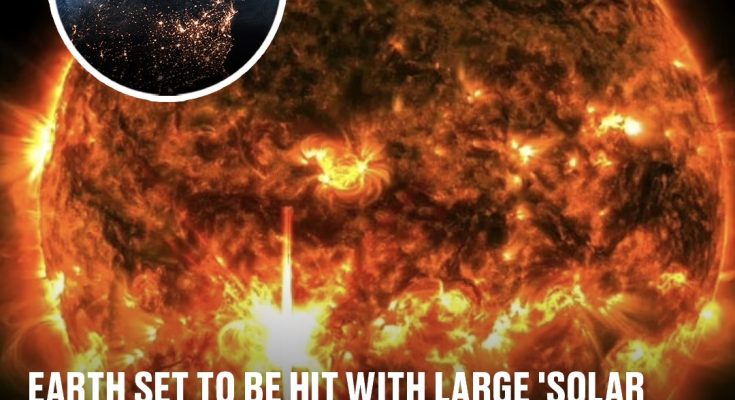A huge ‘solar flare’ is set to hit Earth later this week after an eruption on Tuesday evening (1 October) that took place on the Sun.
It’s not the first solar flare-related week so far in 2024, as a solar storm was blasted towards our planet in May, following a number of coronal mass ejections (CMEs) from the sun after two large sunspots merged.
This meant that a lot of us in the UK could get a glimpse of the Northern Lights, a rare occurrence for the nation.
Advert
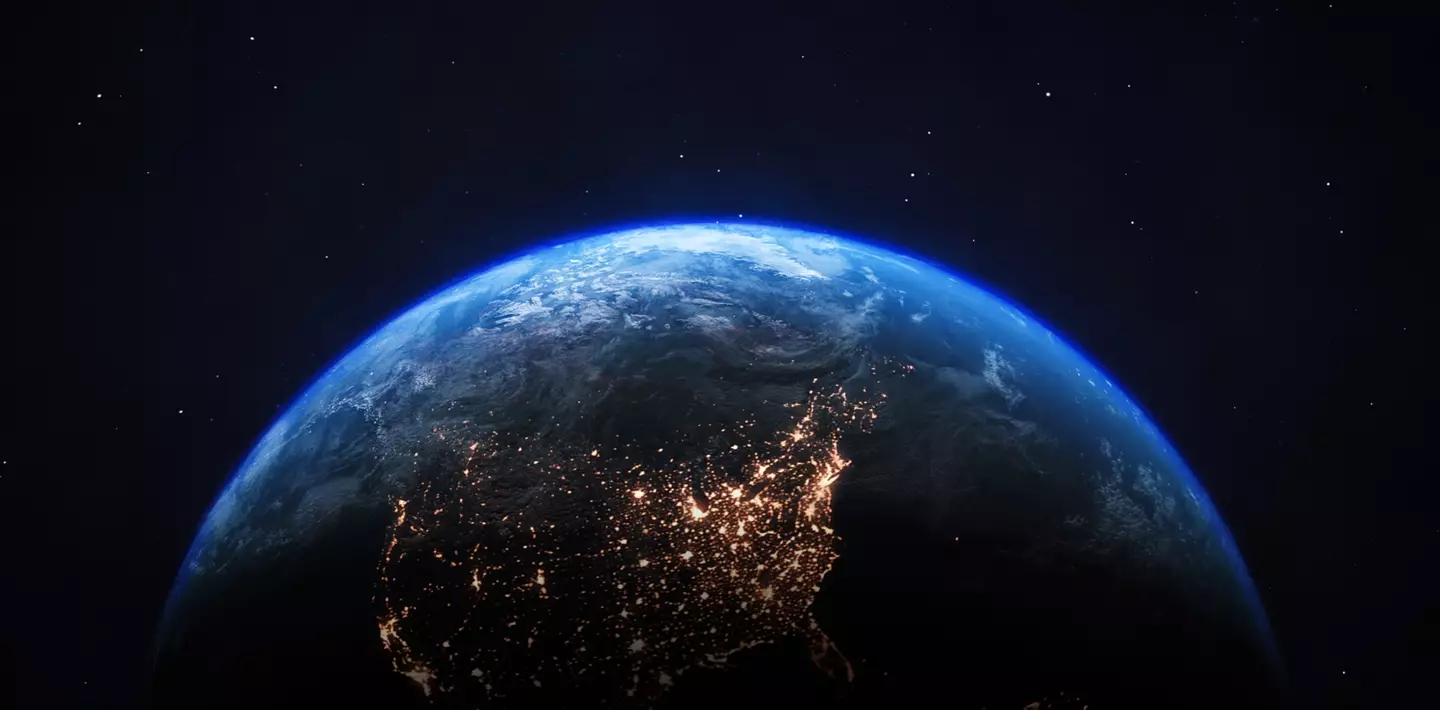
We’re about to feel the effects of another solar storm (NASA)
However, we’re back bracing ourselves for an ‘extreme geomagnetic storm’ after Sunspot AR3842, a dark, fast-growing region of strong magnetic fields along the sun’s surface, produced the second-strongest flare in the last five years.
Solar flares are classed by letters, with X being the largest class, meaning that it can potentially trigger radio blackouts and widespread damage to satellites, or even spacecraft or power grids.
M, C and B-class follow this, descending in order of how severe they are, while a scale of one to nine is within each class, to specify exactly how intense the flare is.
Advert
The largest flare since 2019 was that in May this year, when a X8.9 flare hurtled towards us, while Tuesday’s flare was rated as an X7.1 according to NASA.
It’s already caused a shortwave radio blackout over Hawaii and shot a CME into space, which the National Oceanic and Atmospheric Administration (NOAA) predicts will hit us early to mid-day on Saturday (5 October).
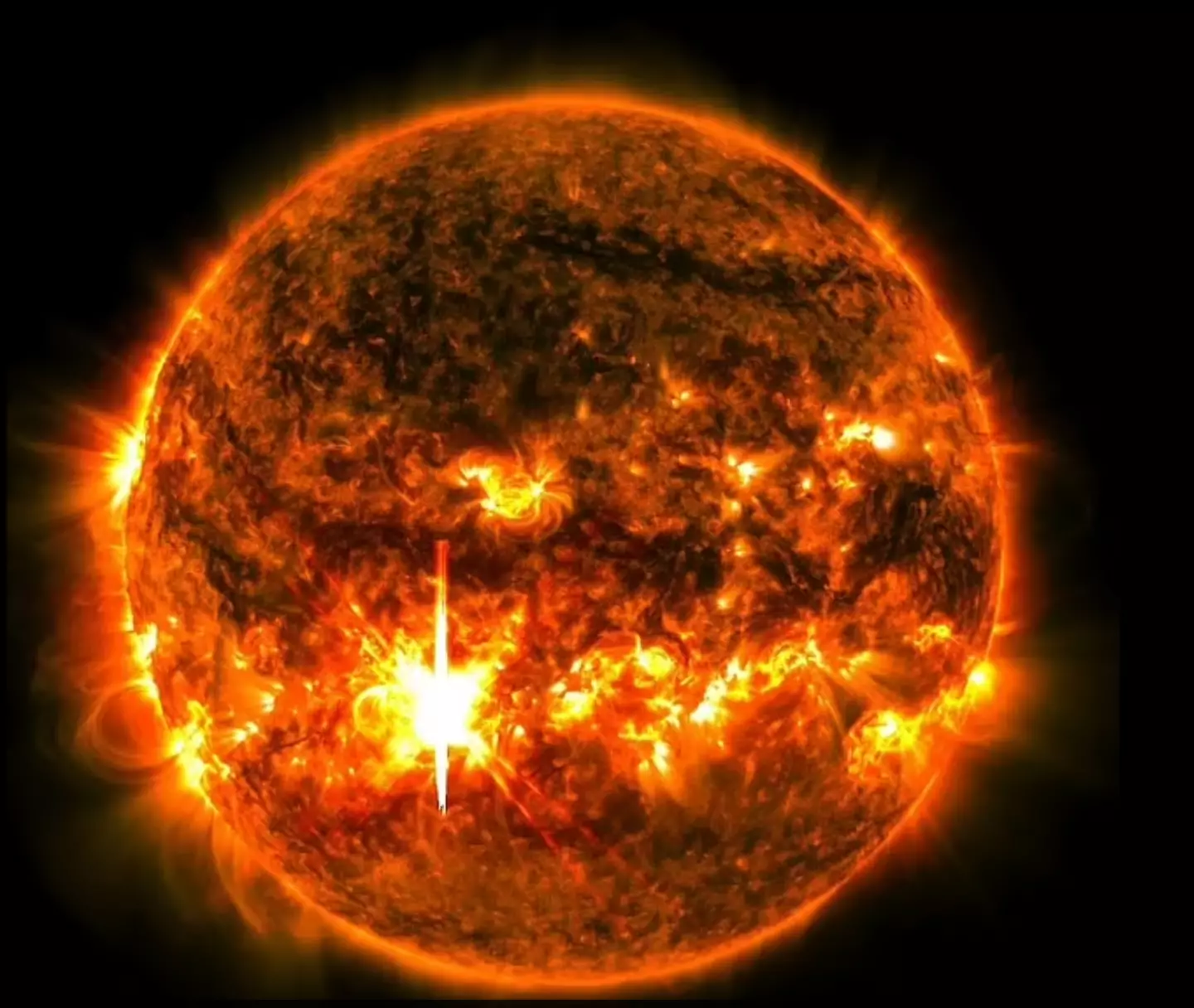
Radio blackouts and power grid outages could occur across the globe on Saturday (Getty Stock Photo)
Known as the largest explosive events in the solar system, the CME is currently hurtling at Earth at hundreds of miles a second, and when they impact our planet’s magnetosphere, which is the space around our planet that is taken up by its magnetic field, then geomagnetic storms take place.
Advert
These cause aurora displays such as the Northern Lights, while disturbances to satellite communications and power grids being damaged are also a possibility.
With the incoming solar storm, it further proves that the Sun has entered solar maximum, which is the period in its 11-year cycle when solar activity is at its most prominent.
Despite scientists predicting that this phase would take place in July 2025, activity on the Sun increased rapidly over the course of this year, and has forced experts to reassess their predictions.
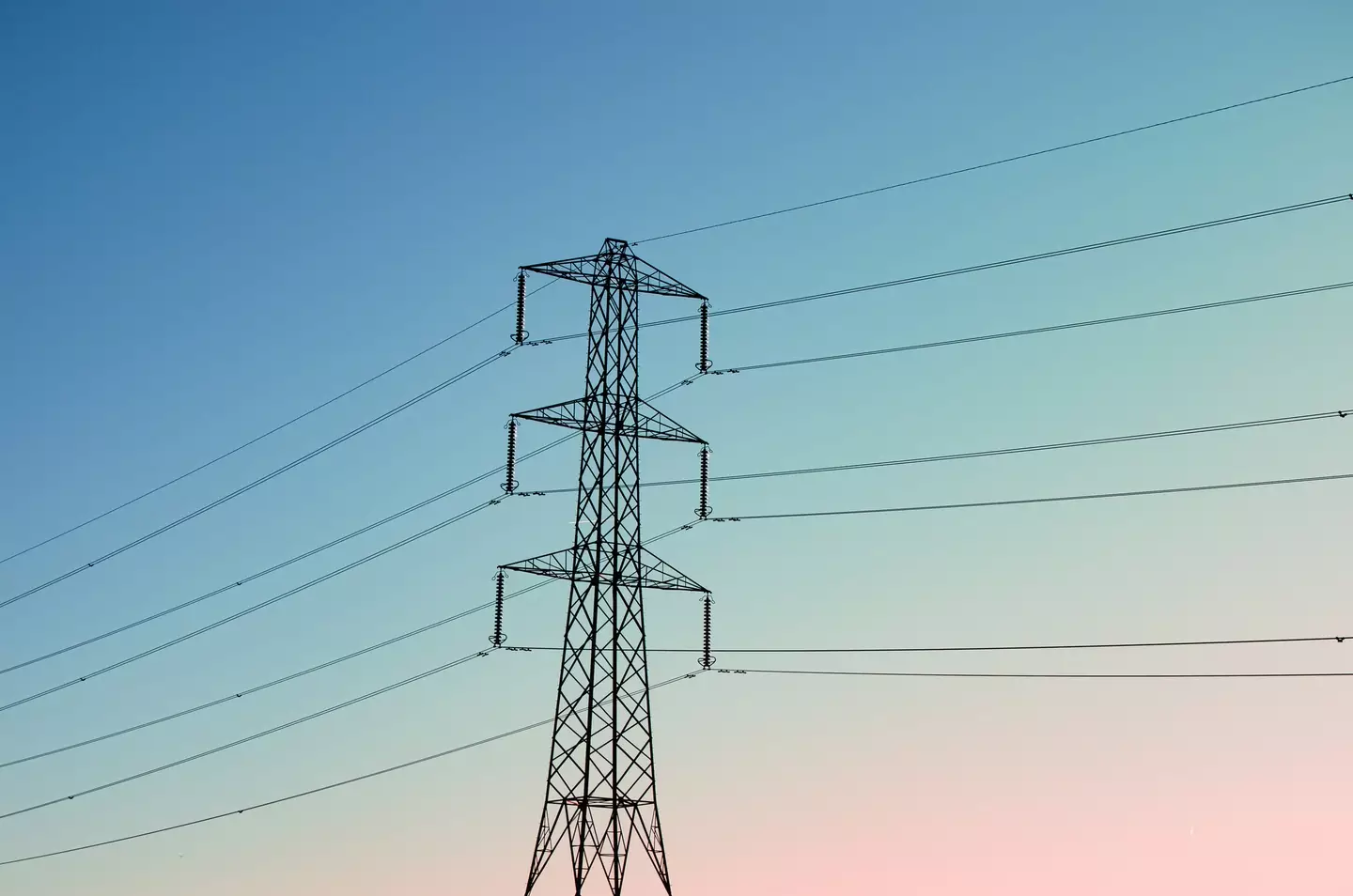
The solar flares are set to keep coming, so these will keep getting affected (Getty Stock Photo)
Advert
So far in 2024, 41 X-class solar flares have been shot out, which is more than the number of these in the last nine years, put together, according to spaceweather.com.
Usually, X-class solar flares only happen 10 times a year, but with solar maximum expected to last another year at the least, we can expect to see more of these powerful solar flares, CMEs and geomagnetic storms affecting Earth in the next year or so.
Featured Image Credit: NASA / Getty Stock Photo

This article contains affiliate links and LADbible Group might make a commission on anything purchased.
If you grew up in the nineties, you’re sure to remember late nights spent whispering on the house phone, hoping your mum doesn’t listen in on the call. But with the arrival of shiny smartphones, we’ve slowly disconnected from the landline and swapped hour-long natters for communication by way of memes.
So, you can imagine how chuffed we were to learn that a tech company has launched a nostalgic product for your smartphone — and it’s perfect for small businesses and nineties kids alike.

Air Landline
With thousands of five-star reviews on Trustpilot, the unique service has been called ‘absolutely brilliant’ by customers who are thrilled with the ‘game-changing’ invention.
One happy customer wrote, “Does what it says on the tin” whilst another raved about the cost, commenting: “Cheap as chips”. A third agreed, simply writing: “Impressed with these guys.”

TikTok/@miss2005
The service, which is designed for small businesses, comes off the back of a recent resurgence of the landline phone on TikTok. Gen Z are of course the culprits behind the trend, proudly showcasing their ‘retro’ phones on the social media platform.
So, where can you get your hands on the landline number service everyone is talking about?

@woonteague
How does the landline service work?
- All you need to do is choose your local area code to create a new telephone number. If you’d prefer, you can sign up to a national 0330 number for the same price.
- Then, provide the company with the mobile number you’d like your new landline number to link up to. Your new number will arrive in your email inbox in minutes.
- Then, jump into your account, set up a welcome message (AI can even do this for you if you’re shy), choose hold music, and turn on call recording if this is a feature you’re interested in.
- If you don’t feel like talking, you can message mates using your new landline WhatsApp account at any time.

TikTok/@brooktheshopaholic
How much does it cost?
You can sign up to the service for free with a seven-day trial. This will give you access to everything from custom welcome messages and hold music to a personalised voicemail.
If you like your new landline number, it’s only £9.99 a month moving forward.
The best part? You don’t need a contract and can cancel at any time.
We hate to admit it, but this is a Gen Z trend we don’t mind getting on board with.
Visit the website to find out more.
Featured Image Credit: @miss2005/@ainomagdalena
Topics: Technology, Phones

Our planet is set to gain a second, ‘mini-moon’ tonight (29 September), which will stick around for a couple of months.
The space rock is part of the Arjuna asteroid belt, which is not too far from Earth by space terms, just 2.8 million miles (4.5 million kilometres) away.
It’s called 2024 PT5 and it helps to make up the population of asteroids and comets that are monitored by some of the finest minds in astronomy, at the NASA-funded Asteroid Terrestrial-impact Last Alert System (ATLAS).
Advert
The asteroid will not complete a full orbit around Earth though, despite getting caught in its orbit and being given the title of a ‘mini-moon’.

The ‘mini-moon’ will look nothing like this (Getty Stock Image)
What is a ‘mini-moon’?
It can be defined as a ‘temporarily captured object’, as the modestly sized 2024 PT5, with a diameter of roughly 11 metres (the same as a London bus), will stay in orbit for a couple of months before making its way through our Solar System.
Advert
The asteroid will orbit our blue planet in a horseshoe-shape, starting on 29 September and going until 25 November.
After escaping from our world’s orbit, it will return to a heliocentric orbit, which is around the Sun – like what we do.
However, it’s predicted that the space rock will not come into Earth’s orbit again until 2055.
How can I see the mini-moon?
Sadly, if you’re not a professional, chances are you won’t be able to see it for yourself.
Advert
The event can’t be seen by the naked eye, binoculars or with a consumer-grade telescope, as the mini-moon will have a magnitude of 22 (incredibly low on the -10 to +20 scale), meaning it will be too faint to see.
You’ll need high-tech equipment but even then, some observatories have revealed to The Sun that professional telescope will also struggle to detect 2024 PT5.
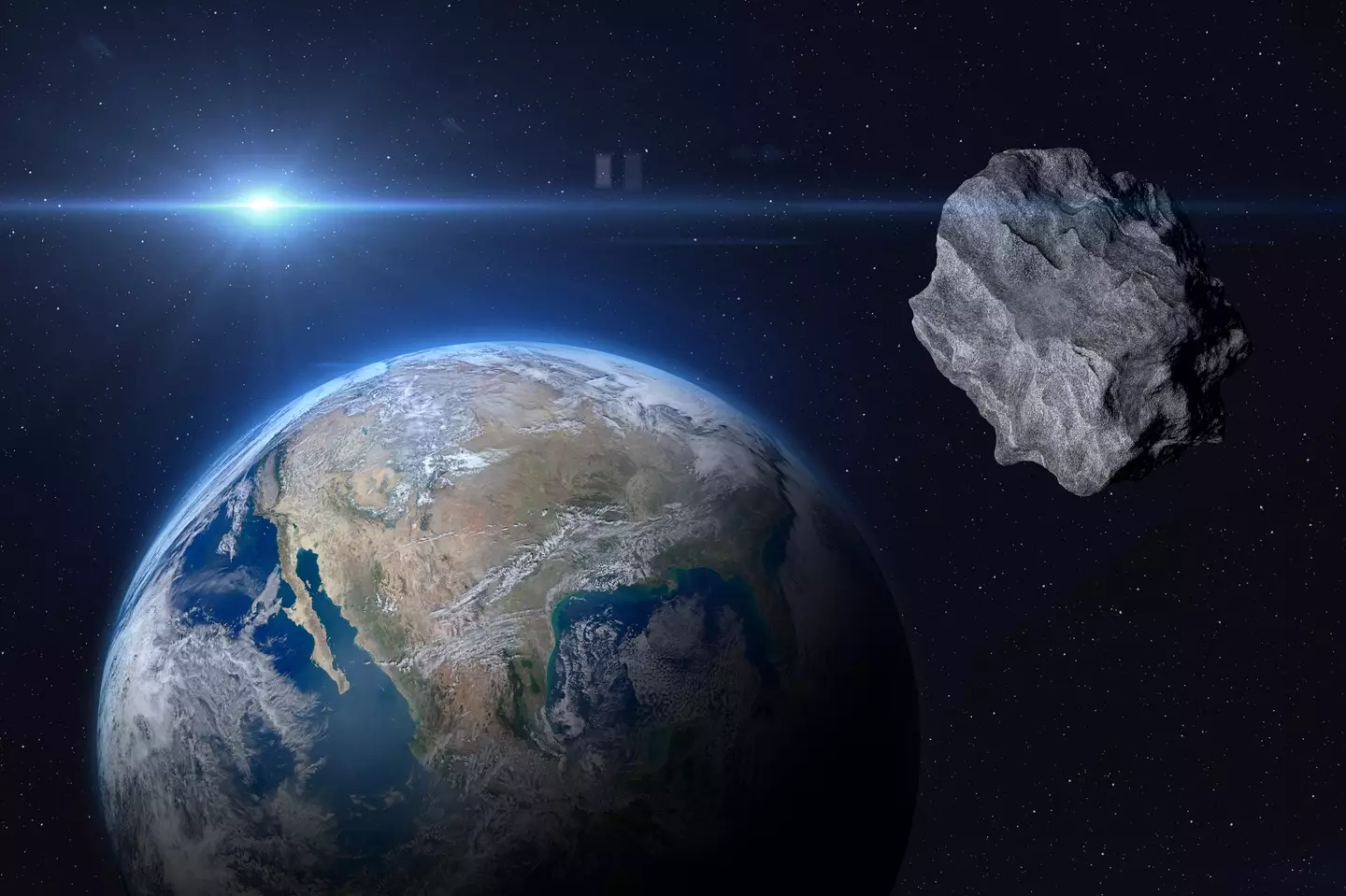
2024 PT5 will orbit Earth for about two months (Getty Stock Image)
Who discovered the new mini-moon?
First discovered by the ATLAS telescope on 7 August in South Africa, the Arjuna rock is known as a near-Earth asteroid (NEA).
Advert
Arjuna asteroids orbit the Sun on an orbital path that stretches out a bit further into the Solar System compared to our planet’s path, though some may come close to the Earth-Moon system.
Have there been other mini-moons?
The short answer is yes.
In our time observing space, 2024 PT5 has not been the first mini-moon collected by out planet, as it is known to capture and pull NEAs into its orbit.
Advert
Back in February 2020, a tiny asteroid named 2020 CD3 was found to have been orbiting Earth for a few years, before leaving our orbit the following month.
In 2016, there was an object called 2016 HO3, which was 40-100 metres in diameter, though it did not orbit the Earth so it was not a moon – but it oddly moved in sync, looking like it was orbiting our planet but it was really orbiting the Sun.
Featured Image Credit: NASA/Getty Stock Images
.png)
Sorry I know we’re one day away from Friday, but I thought I’d just let you know that an asteroid the size of the Empire State Building could hit the earth in just over 150 years.
NASA discovered the rare B-type asteroid back in 1999 and has dubbed it as one of the ‘most dangerous’ objects in the solar system.
The 1,614-foot-wide (492 meters) asteroid is big enough to cause significant destruction on Earth, and is capable of digging itself several miles down into the planet’s surface.
Advert
This would most likely cause an earthquake spanning hundreds of miles of area from the impact location.
Thankfully, there are two important pieces of info here:
1) You’ll be dead if/when it happens
2) There’s a 1 in 2,700 chance of it actually happening
Advert
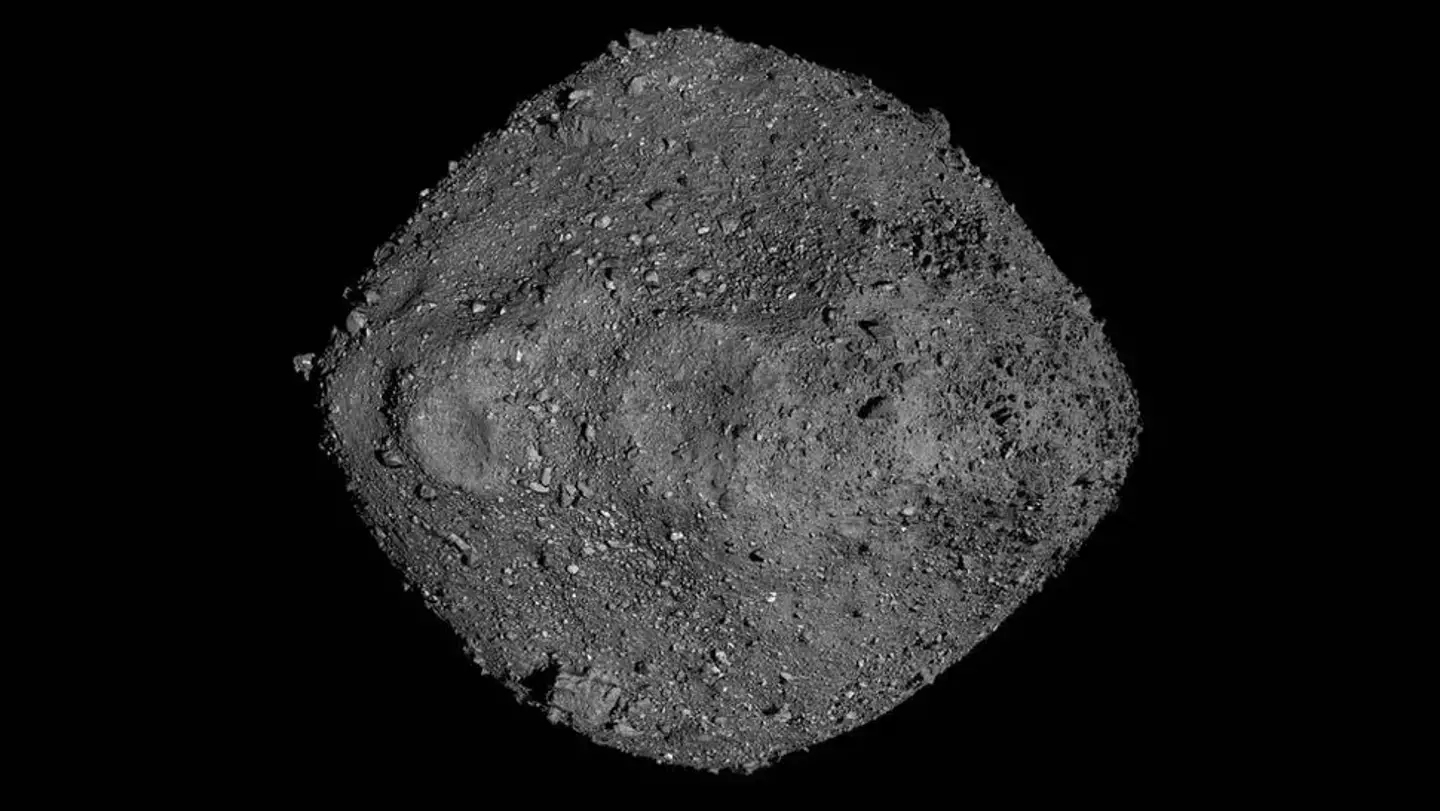
NASA
But if it does head to us, you best sure that NASA has over 150 years to get prepared for the rock – titled asteroid Bennu – with 24 September 2182 being the most likely due date.
While the chances of a strike have risen over the next century or two, NASA’s improved probabilities come courtesy of its OSIRIS-REX spacecraft, which has been on a five-year mission to study Bennu up close and collect rock samples for scientists to study back home.
And after a length journey, NASA announced in December that a grain from the asteroid Bennu would be brought to Diamond Light Source, the UK’s national synchrotron, for scientific measurements.
Advert
The grain is from the 100 milligrams of sample sent to the Natural History Museum (NHM) in London, small fraction of the approximately 70 grams of Bennu rock.
This will not only provide new scientific data and new knowledge about the asteroid, but the origins of our solar system.

Pexels
Dr Ashley King, a planetary scientist from the Natural History Museum, said: “Although this sample is small, only a little larger than a grain of sand, it is more than enough to reveal a lot of information about our solar system.
Advert
“Diamond is key as it enables non-destructive testing of the samples, which is vital.
“The Bennu samples will be used to test theories that suggest asteroids like Bennu may have been involved in delivering key components to the young Earth system some 4.5 billion years ago.
“Potentially, it’s how we got the water in our oceans and some of the compounds that were necessary to kick-start life.
“Our experiments are focussed on understanding the mineralogy, composition and textures of the samples to be able to tell the story of Bennu’s history.
Advert
“Using DIAD (Dual Imaging And Diffraction) we’ll be able to explore the mineralogy of Bennu in 3D.”
Featured Image Credit: Getty Stock Images/NASA

The astronomer who unveiled the ‘Pale Blue Dot’ in the 1990s has explained why he believed the image was so important for all of mankind to see.
Throughout his life, legendary planetary scientist Carl Sagan dedicated his work to furthering our understanding of space and the possibility of extraterrestrial life (aka aliens) existing.
Often described as ‘the scientist who made the Universe clearer to the ordinary person’, Sagan took the complex – and often mind-boggling – world of astrophysics and made it easily accessible to the likes of you and I.
Advert
In 1990, Sagan unveiled an image called the ‘Pale Blue Dot’ to the world, take a look at the image below:

The image was released in 14 February 1990 (NASA/JPL-Caltech)
Now, upon first glance I know this photo looks like an image of the night sky taken in your back garden on an old mobile phone.
However, I assure you this is not an average photo of the night sky, but instead an image captured by by NASA’s Voyager 1 around 3.7 billion miles (6 billion kilometers) from the Sun.
Advert
The subject of this photo? Planet Earth.
Look closely at the photo and you’ll notice a small pale blue dot just off centre in the upper right part of the image, that’s us.
After seeing the images, Sagan was inspired to use it as a way to drive home just how unique our situation is in the universe.
Talking about the lack of interstellar life in a press conference for the image, Sagan said: “For me, that underscores the rarity and preciousness of the Earth and the life upon it.
Advert
“On that blue dot, that’s where everyone you know. Everyone you ever heard of, and every human being who ever lived, lived out their lives.”
Urging others to use the image as inspiration to look after our collective home, he continued: “Just speaking for myself, I think this perspective underscores our responsibility to preserve and cherish that blue dot, the only home we have.”
I can think of a few people who could use such a reminder, that’s for sure.
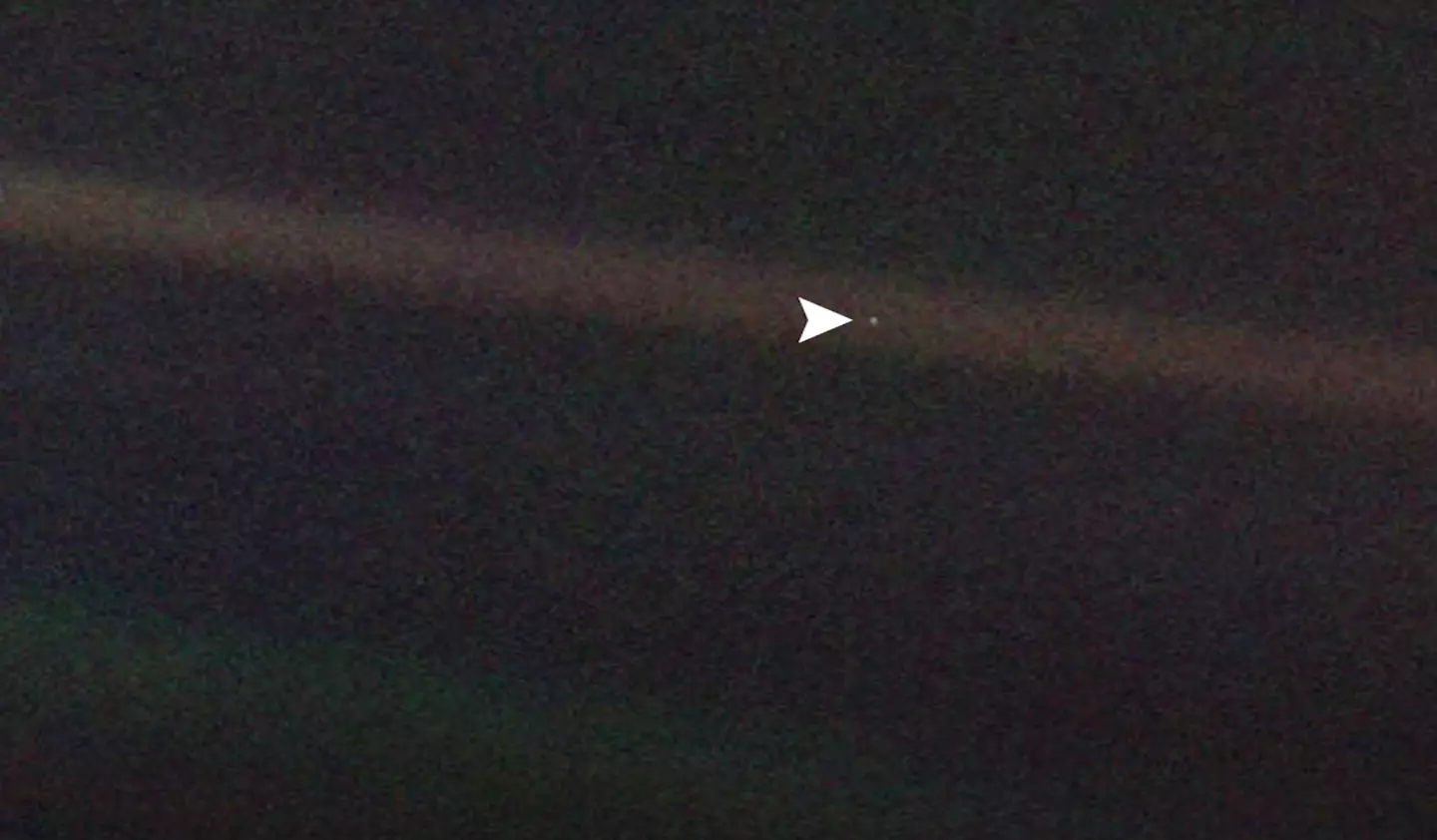
That’s us, the blue dot (YouTube/The Planetary Society)
Advert
Like the astronauts who’ve spoken candidly about the impact of the ‘Overview Effect‘, the image leave a lasting impact on Sagan. He would later go on to name his 1994 book Pale Blue Dot: A Vision of the Human Future in Space after the image.
Proving this photo is definitely not your typical image of the night sky.
The legacy of the ‘Pale Blue Dot’ has gone on to inspire more than Sagan in the subsequent years as well, with Garry Hunt telling the BBC in 2020 that he often uses the image as a way to drive home the importance of taking climate change seriously.
“Every time I give a climate talk and I talk about what you’re doing now to make a change – I show this picture because it shows the Earth is an isolated speck. This tiny blue dot is the only place we can possible live, and we’re making a jolly good mess of it,” he said in the interview.
Featured Image Credit: ( YouTube/ The Planetary Society)
Topics: Science, Space, NASA, Technology, Environment

